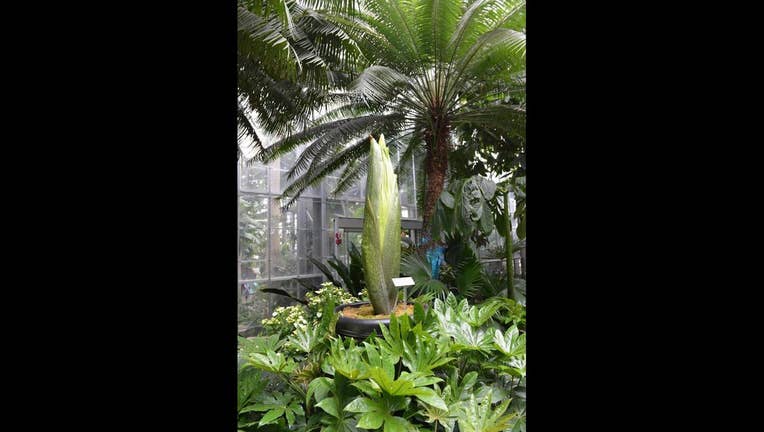Corpse flower nears short, stinky bloom at the U.S. Botanic Garden Conservatory

WASHINGTON - Something stinky is about to bloom at the U.S. Botanic Garden Conservatory.
The corpse flower, or the Amorphophallus titanium, typically blooms for 24 to 48 hours and is most odoriferous at night. Peak bloom is estimated to occur July 28-31.
Referred to as the corpse flower or stinky plant, its putrid smell is most potent during peak bloom at night into the early morning. The odor is often compared to the stench of rotting flesh. The inflorescence also generates heat, which allows the stench to travel further. This combination of heat and smell efficiently attracts pollinators, such as carrion beetles and flies, from across long distances, according to the U.S. Botanic Garden Conservatory.
The garden will be open until 8 p.m. every night while the flower is getting ready to bloom. Once peak bloom begins, they will stay open until 11 p.m.
It blooms infrequently and irregularly. According to the Botanic Garden, it blooms only once it's harvested enough energy in its underground stem -- sometimes that happens annually, sometimes it happens much less frequently. For reference, this is the first bloom of this particular plant, which is six years old. The flower is massive, the "largest unbranched inflorescence in the plant kingdom," per the Botanic Garden. It measured roughly 3.5 feet tall when it went on display.
It requires very special conditions, including warm day and night temperatures and high humidity, making botanic gardens well suited to support this strange plant outside of its natural range.
The U.S. Botanic Garden previously displayed blooming titan arums in 2003, 2005 and 2007, 2010, and 2013.
Watch the bloom's progress live:
The U.S. Botanic Garden last displayed a corpse flower bloom in 2013. More than 130,000 people came to see the plant in person, and more than 650,000 viewers accessed the live webstream.

